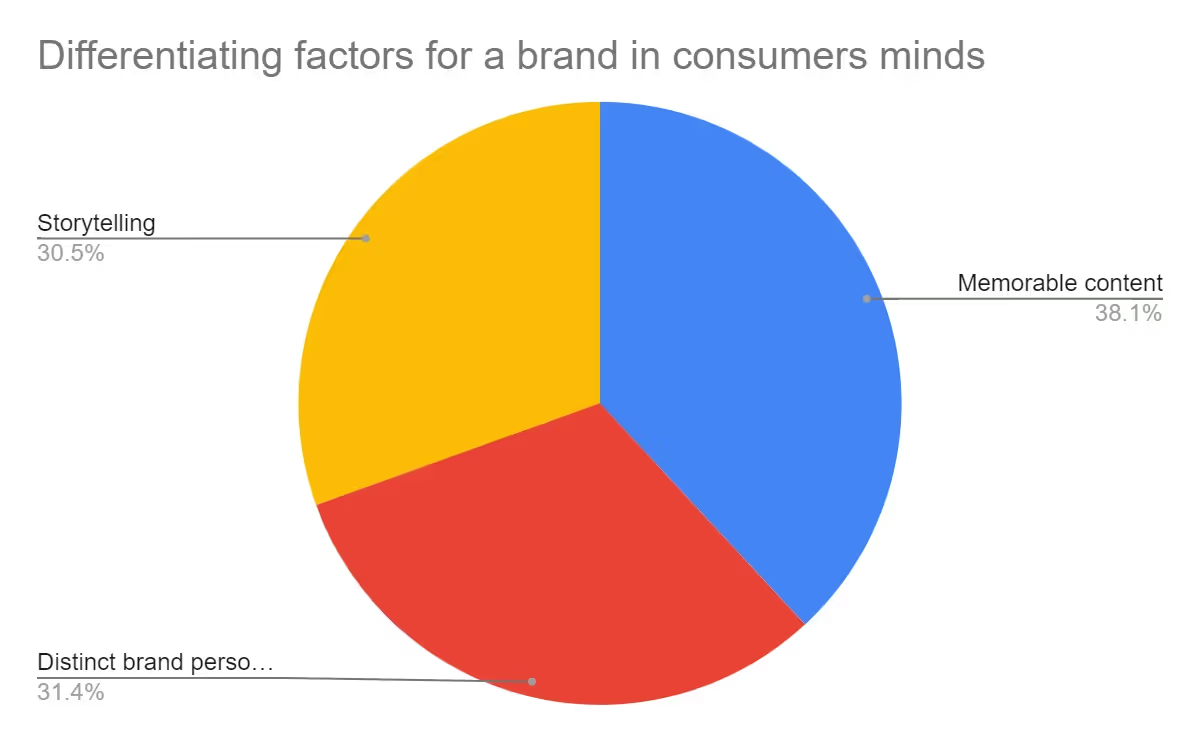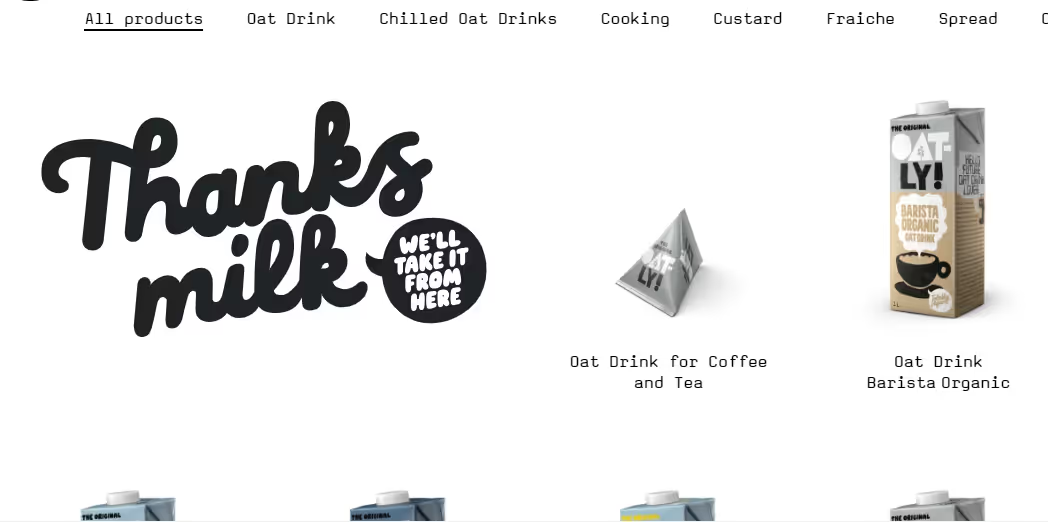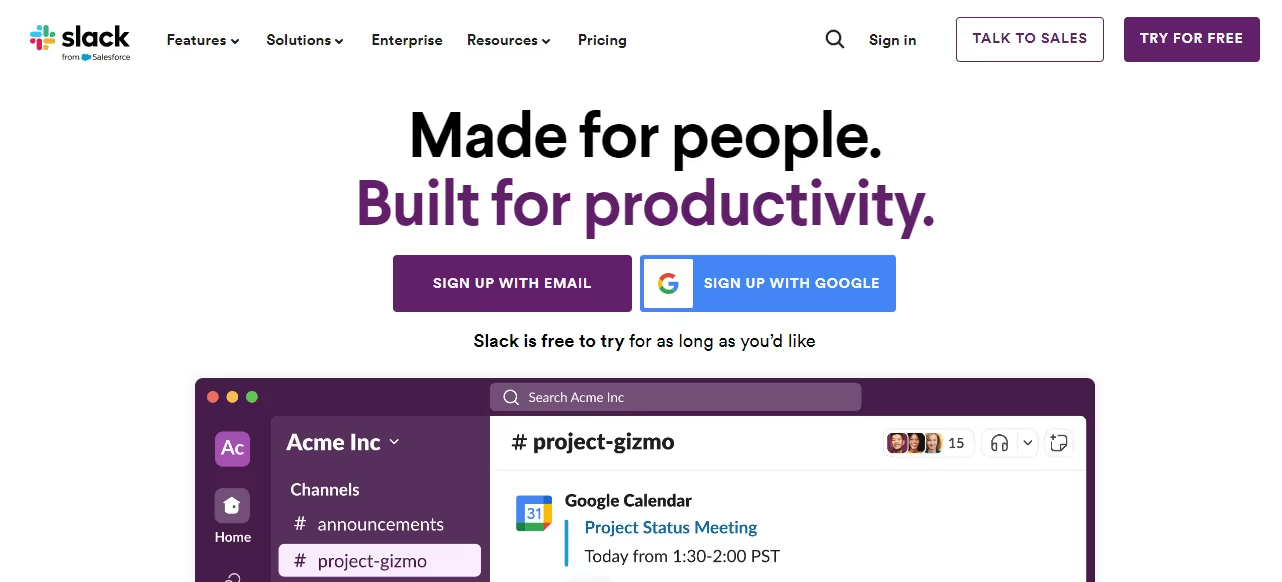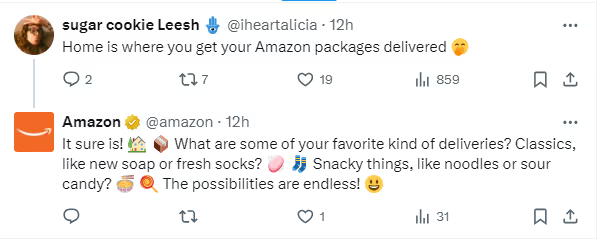What makes Starbucks the largest coffeehouse chain in the world? You know it’s not “just” their coffee, there are plenty of underappreciated cafes around that are far superior in taste.
Is it their customer service? Well, we’ve all had some instances where they could do better in that area. Is it their innovative products? To be honest, most of their regular customers have a pretty fixed choice every day.
So what is it?
What makes you see their cup from far away and immediately recognise it? What makes their social media campaigns distinct and memorable?
That, my friend, is the power of tone of voice in their branding. Whether it’s the banners in their outlets, digital ads, or website copy, they follow a consistent tone of voice across all channels.
In this blog post, we will discuss how tone of voice can boost your customer engagement and increase customer satisfaction. So let’s look at how to describe a tone of voice, the types of different tones of voice, the importance of maintaining consistency across all channels, and some effective tone of voice examples.
Keep reading!
Understanding tone of voice
What is tone of voice? In simple words, tone of voice is how a person communicates. It includes the volume & pitch of the sound, vocabulary, and also the speed of speaking. Every individual in the world has different types of tones of speech. These tones also affect how the listener perceives and reacts to their message.
For a brand, tone of voice is how your business communicates with the audience during customer interactions. It can include your customer service calls, your social media posts, advertisements, website copy, or basically any way your audience “hears” you.
Brand voice vs tones of voice
Brand voice refers to the words and language you speak with your audience. It also helps you to deliver your brand’s unique perspective and value. In short, your brand voice is the overall personality of your business.
On the contrary, the tone of voice refers to how you deliver your messages. Your brand voice is always consistent but the tone can shift depending on the situation.
For example, think of a brand that uses a happy and humorous brand voice. But when they have to share sad news regarding the death of one of their co-founders. Are they still going to use the same brand voice? A big No!
Tone of voice examples in action
A survey by Sprout Social showed that 40% of consumers prefer brands whose content is memorable, 33% prefer a distinct brand personality, and 32% were impressed with compelling storytelling.
Note how all three of the factors that differentiate a brand in the audience’s minds are deeply affected by different tones of voice.

Here are a few tone of voice examples to help you see the difference:
Humorous and quirky
Depending on your audience and the industry you operate in, a little humour can make people laugh and remember the brand better. Suitable humour also imparts a welcoming vibe and makes your content more shareable.
Frida serves as one of the best sassy tones of voice examples. Parenting can be exhausting and Frida knows that well. They use light humour and witty headlines to hit the pain points while making sure customers remember them when they need to make a purchase.

💡 Using light humour is one way to boost customer engagement on your social media channels. Click here to learn 8 more.
Serious and inspirational
A serious and inspirational tone can make the brand seem trustworthy and reliable. Nike is famous for using motivation in their messaging. The brand’s “Just Do It” demands the user to get out of their comfort zone and become a better version of themselves. Their social media campaigns also follow the same uplifting approach.

Friendly and conversational
Brands use a friendly and conversational tone to make them sound approachable and down-to-earth. This tone makes people comfortable as it makes them feel like talking to someone they already know.
One good friendly tone of voice example is Oatly. The alternate dairy brand uses a casual approach for its website copy, making its messaging miles far from sounding salesy.

The importance of consistency
Your brand tone is going to be read and heard on all channels including social media and your website. So naturally you’d want that tone to be consistent on all these platforms. But why does consistency matter?
The power of consistency helps brands to build trust and recognition. When a brand uses a similar tone across all platforms, it builds a sense of familiarity and reliability for the audience. Customers start understanding the brand’s values and ideas from the communication style. Also, a consistent voice strengthens brand recognition and makes it easier for customers to connect with your brand.
For example, Swiss Impact Store uses an inclusive, friendly, and caring tone for its blog posts and portrays the same image through its Instagram feed:


A brand using a serious and considerate tone on their website but using unsuitable jokes and offensive comments on their social media campaign are examples of negative tone of voice. Their brand messaging gets diluted and unclear and the audience won’t know if they can depend on them for their needs.
Crafting your brand’s tone of voice for better engagement
Crafting a clear brand tone of voice is your first step towards creating a strong brand personality, and boosting customer engagement. Use the following steps to create and improve your existing tone of voice:
1. Understanding your audience
Your audience is the most important part of your brand. After all, they are those who buy from you. It is only understandable that your voice tones reflect your audience’s state of mind, preferences, and attitudes.
All highly effective tone of voice examples start with the following key information:
- Who is your audience? Know the age, gender, location, income level, education level, and other demographic details of your audience. This information helps tailor your brand voice to suit their preferences and characteristics.
- What do they value? Understand the values, attitudes, interests, lifestyles, and personalities of your audience. This deeper understanding allows you to craft a brand voice that aligns with their beliefs and aspirations.
- How do they communicate? Identify how your audience prefers to consume content and communicate. Whether they prefer formal or informal language, long-form or short-form content, visual or textual content, etc.
2. Go through current content
There’s never a wrong time to improve existing content. Perform an audit on your current content, and examine if they match with your brand’s style guide. It can take some time especially if you have been producing content for a long time.
Ensure all your content is in line with your brand’s current position, your future aspirations, and any no-go areas you have identified.
Take Patagonia as a tone of voice example.
Who they are currently: High-quality, durable outdoor gear.
What they aspire to be: Activist, environmentally responsible, advocating for sustainability. Their activism for environmental causes is a core part of their brand identity.
What they don't want to be: Disposable, trend-driven, mass-produced outdoor gear.

3. Create a tone words list
Brands build up a trustworthy and rememberable voice by repeating the same phrases or words. You can also do the same. Create a list of tone words that best describe how you would communicate with your audience.
For example, Copy Posse, a coaching program targeting new and aspiring copywriters uses word like “rad,” “ignite” and made-up words like “de-douchify” to appeal to their young and ambitious target audience.

4. Create Rules for Content Creation
Every platform has different demands, so you cannot post the same content everywhere. But to keep a consistent tone you can establish some rules for creating content for each channel. Create clear and actionable guidelines for all social media platforms, blog posts, emails, newsletters, press releases, and ad campaigns. Include:
- Brand voice overview: A brief description of your tone of voice personality, values, and objectives.
- Style guide: Include your tone words list, preferred writing style, tone of voice examples from previous content, and jargon or phrases that need to be avoided.
- Audience persona: Detailed description of your customer’s profile, including their demographics, pain points, and desires.
- Content objectives: Why are you creating the content? Outline clear aims and objectives for each piece.
- Content format: Each platform follows a different format. Specify whether you need text, image, video, or a combination to allow suitable content adjustments.
Implementing tone of voice across your content
Now that you've established your brand voice and documented its characteristics, it's time to bring it to life in your content. This section will provide practical tips and tone of voice examples to ensure your brand shines through on all channels.
Website Copy:
Website copy should be clear, concise, and informative. Use active voice and avoid jargon to ensure easy understanding for your audience.
Focus on your product or service's benefits to the user.
Examples:
Slack: Slack’s website is straightforward and professional, yet maintains a clear language and explains complex features in an easy-to-understand way.

Mailchimp: Their website copy is informative and authoritative, and uses an approachable tone throughout the website.

Social Media:
Social media is a space for conversation and interaction. Use your brand voice tones to engage, share your views on current trends, and respond to your customers’ queries.
Examples:
Wendy's: Their social media presence is known for its witty and sassy tone. They use playful jabs and pop culture references to create a fun and engaging online personality.

Dollar Shave Club: Their social media content is bold and humorous, which is their brand voice. They also use playful language and lighthearted content to resonate with their target audience.

Customer service interactions:
Customer service interactions are all about building trust and resolving issues. Use a suitable but always empathetic and professional tone, even in challenging situations.
Here are some examples of how tone of voice can affect communication:
Examples:
Zappos: Their customer service is renowned for being friendly, helpful, and always willing to go the extra mile. Their representatives embody the brand's core values by providing a positive and personalised experience.

Amazon: The customer service of Amazon prioritizes helpfulness. They ensure clear communication while remaining casual and understanding.

💡Read more about tone of voice in customer service here.
Evaluating and evolving your tone of voice
Just like your brand itself, your voice needs periodic evaluation. Here's why:
Market shifts: Customer preferences and industry trends are always evolving. Regularly updating your tone ensures your brand stays aligned with the current landscape.
Evolving audience: Your target audience might grow or change over time. For example, at one time millennials were the ideal customers, but now Gen Z is also becoming important. So, evaluating your voice also ensures that you resonate with your audience well.
Dealing with tone-of-voice adjustments
After the research, you might decide to tweak your brand voice. Here are some tips you can use to make informed adjustments:
Gradual evolution: Avoid drastic changes that could confuse your audience. Introduce small adjustments that align with your brand's overall direction.
Maintain core values: While your voice might evolve, ensure it stays true to your brand's core identity and values.
Update brand guidelines: If you’re changing your tone make sure to update your current voice guidelines.
Set the tone for your customer delight
What did you think of these Tone of voice examples? When I read them, I found they explain why your brand’s personality and perception are so dependent on how you communicate.
Tone of voice has the power to increase engagement and create customer delight. And a customer service tool like Trengo will help you get there. It can help maintain a consistent brand voice across all channels where you frequently interact with your customers. By bringing all communication channels together and using time-saving automation, you can focus on your tone of voice, without putting extra pressure on your team.
Stop struggling with brand tone consistency. Create a memorable, personal and compelling tone of voice and enjoy your happy customers. Try an all-in-one solution… Try Trengo!
Ask for a free demo
Frequently Asked Questions (FAQs)
What does 'tone of voice' mean in branding and communication?
Tone of voice in branding is the unique style, mood, and personality your company expresses through all forms of communication whether it’s your website, social media, ads, or customer service. It’s not just what you say, but how you say it: the vocabulary, phrasing, and emotional undertones that make your brand instantly recognisable and relatable. For example, your brand might be friendly and conversational, bold and rebellious, or professional and reassuring whatever best reflects your values and audience.
Why is tone of voice important for customer engagement?
Tone of voice is critical for customer engagement because it shapes how people perceive and connect with your brand. A distinctive, consistent tone helps you stand out in crowded markets, builds emotional bonds, and makes your content memorable. The right tone can make customers feel understood, valued, and more likely to engage, return, and recommend your business. Studies show that tone directly influences trust, loyalty, and even revenue growth.
How do I define my brand’s tone of voice?
Start by identifying your brand’s core values, mission, and target audience. Analyse your current communications to spot inconsistencies and areas for improvement. Choose three to five adjectives that describe how you want your brand to sound (e.g., warm, witty, authoritative, or quirky). Create clear, actionable guidelines including dos and don’ts and real examples to help your team apply the tone consistently across all channels. Involve key stakeholders and regularly review your tone to ensure it remains authentic and relevant as your business evolves.
How do I choose the right tone of voice for my business?
The right tone of voice should align with your brand’s personality, values, and audience expectations. Research your target customers how do they speak, what do they care about, and what tone resonates with them? For example, a fintech brand like Monzo uses plain, friendly language to make banking accessible, while BrewDog’s rebellious tone appeals to craft beer fans seeking authenticity. Test your tone in different contexts and gather feedback to refine your approach.
What impact does tone of voice have on customer perception and trust?
Tone of voice significantly shapes how customers perceive your brand’s friendliness, trustworthiness, and credibility. A consistent, appropriate tone builds trust and makes customers feel secure and understood, increasing their willingness to engage and recommend your brand. Inconsistent or mismatched tone can confuse or alienate your audience, damaging trust and weakening your brand’s reputation. Research shows that trustworthiness often conveyed through tone is the strongest predictor of brand desirability and long-term loyalty.
How can tools like Trengo help maintain a consistent tone of voice?
Platforms like Trengo enable your team to manage all customer conversations from one place, apply tone guidelines, automate responses, and review messaging for consistency across email, chat, WhatsApp, and social channels. This ensures every interaction reflects your brand’s narrative and personality, no matter who’s responding or which channel is used.




.png)











